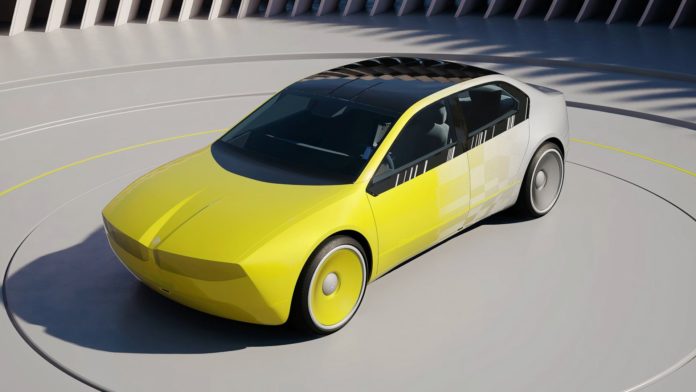More than two years ago, BMW shocked showgoers at the Consumer Electronics Show in Las Vegas by presenting an intriguing technology called E Ink, and now it seems that the technology could be production-ready by the end of the decade, possibly even as soon as 2027. With E Ink, the German automaker made a BMW iX change from white to black in an instant, using electrical impulses to manipulate the alignment of molecules, but it soon got more advanced.
Various patterns and shapes are possible, and since that award-winning invention was first shown in January 2022, it has been further developed and showcased in more exciting ways, including on an official BMW Art Car and the i Vision Dee color-changing concept. When asked by Australian publication Drive whether the chameleon-copying technology could viably reach production in the next “three to five years,” Dr. Stella Clarke, the engineer responsible for BMW’s innovation in this field, responded positively: “I’ll answer that with, ‘Yes.'”
“The vision would be to bring [E Ink] to a broad customer base and the dream is that in a car factory, you no longer have the traditional spraypainting cabins, but rather, everything gets [E Ink] and every car can do every color.”
– Dr. Stella Clarke, BMW E Ink Engineer
E Ink Will Be Expensive, At First
Markus Brandly, a BMW Engineering and Emission Test Center Vehicle Analyst, explained to celebrity car enthusiast Jay Leno how the technology works a couple of years ago, and he called E Ink “a foil that, in the center, has millions of microcapsules which hold a clear fluid with electrically charged pigment.” That doesn’t sound cheap, and Dr. Clarke has already explained that the stiffness of the material on the iX Flow Concept was a challenge to reform.

Add CarBuzz to your Google News feed.
“The truth is it’s probably not going to be the most price-effective thing in the beginning, so I could imagine it starting off in a selective market and then hopefully broadening out,” said Dr. Clarke. The BMW Skytop Concept, if approved for production, would be an expensive low-volume special edition, but if E Ink doesn’t appear there, several other creations will be unveiled between now and 2027, and even more by the end of the decade.
Several Potential Advantages And Drawbacks
The obvious benefit of this was touted when the car was first revealed: greater personalization with the simultaneous benefit of potentially lowering production costs once E Ink is scaled for mass-market volumes, but it could also be used to indicate an EV’s charge status, or robotaxis of the future to indicate their availability. Naturally, since this is an electrically-powered technology, one might have concerns about battery drainage, but Dr. Clarke says that the tech is immune to the effects of ambient light (natural or artificial), very stable, and very efficient.
“When the car is off, it stays the same color – it doesn’t need energy to be on! No light can do that. And to change the color of an entire vehicle doesn’t require much energy at all; you only pull about 20 watts, which is about the same as a single light bulb or one LED strip in the door.”
One could change their car from black to white on a hot day and vice versa on a cold one. Other automakers have looked at thermally efficient paint for the same reason. Another potential scenario is that the key fob could be used to make the car flash different colors when searching for the vehicle in a crowded parking lot, and emergency vehicles could use it to be more visible on the road, or less visible in more surreptitious uses. Naturally, there would need to be legislation to cover such technology’s use to prevent misuse by those looking to evade authorities and to stop people who do the Maybach bounce on the pavement from distracting other road users on the freeway with unnecessary color changes.
BMW Is Not Alone In Color-Changing Technology
Dr. Clarke says that it would be beneficial to have laws that say a person can only change the color of their car when it’s static, but that may not be enough for every region, saying, “It’s going to be very country-specific.” Proving her point is the fact that adaptive headlight systems are not strictly legal in America, but they’re prolific in Europe. Perhaps competition can breed the solution. Dr. Clarke notes BMW knows “concretely of one competitor” working on the same sort of thing, and she describes it as “an honor” to have this entity working toward the same goal.
Despite major challenges in product testing – “the UV cycle alone takes about six months to do” – Dr. Clarke says that all of the hastily prepared prototypes that were put together for CES 2022 are “all still working,” so things look promising. Of course, prolonged exposure to extreme temperatures up and down the scale, as well as the issue of stone chips, will be the most challenging aspect of making this technology mainstream, but BMW is already developing ways of making E Ink cheaper and simpler to apply.
Source:
Drive

